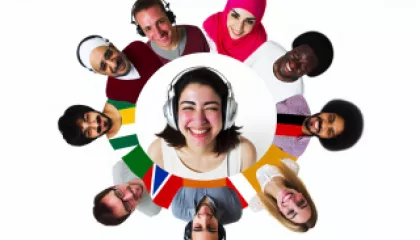10 Psychological Effects of Music on the Human Brain
Music, a universal language that transcends cultural and linguistic barriers, has an undeniably powerful effect on the human psyche. Its magical ability to evoke emotions, trigger memories, and even influence behavior is a testament to its profound psychological impact. In this article, we delve into the psychology of music by exploring ten of the most fascinating psychological effects of music on the human brain.
1. Emotional Elicitation
Music has a remarkable ability to evoke deep-seated emotions within us. It's not uncommon to feel joy, sadness, excitement, or nostalgia while listening to certain tracks. This emotional elicitation stems from the complex interplay between the auditory cortex (which processes sound) and the limbic system (which controls emotions).
- Melody and Harmony: Melodies and harmonies can induce feelings of happiness or sadness. Major keys typically convey positive emotions, while minor keys express negative ones.
- Tempo: Fast-paced music can trigger feelings of excitement or anxiety, while slower tempos can induce relaxation or melancholy.
2. Memory Trigger
Ever heard a song that instantly transported you back to a specific moment in time? That's the power of music acting as a memory trigger.
- Emotional Context: Music often serves as an emotional bookmark, allowing us to recall events associated with intense feelings.
- Nostalgia: Familiar songs from our past can spark vivid recollections, a phenomenon known as 'music-evoked autobiographical memories'.
3. Mood Regulation
Music is often used as a tool for mood regulation. Depending on what we're feeling, we might choose a particular genre or song to either enhance or alter our current mood.
- Up-Regulation: When we want to elevate our mood, we might opt for upbeat, lively music.
- Down-Regulation: Conversely, when we need to calm down or relax, soothing melodies can be our go-to.
4. Music and Focus
Interestingly, music can also enhance our focus and concentration, especially instrumental tracks without lyrics.
- The Mozart Effect: This term refers to the proposed boost in spatial-temporal task performance after listening to Mozart's music. However, subsequent research suggests the effect might extend to other types of music as well.
- Background Music: Soft, non-intrusive background music can facilitate better focus on tasks by providing a steady auditory environment.
5. Pain Perception
Studies have shown that music can affect how we perceive pain, making it a valuable tool in various healthcare settings.
- Distraction: Music can distract our attention away from discomfort, thereby reducing pain perception.
- Relaxation: Calming music can decrease anxiety and tension, leading to lower levels of reported pain.
6. Social Connection
Music is a powerful social glue that brings people together. Shared musical experiences can foster a sense of community and belonging.
- Group Identity: Certain genres or bands can become the cornerstone of subcultures, fostering a strong sense of group identity.
- Shared Experience: Concerts, festivals, and communal music-making can strengthen social bonds.
7. Stress Reduction
Music has a well-documented relaxing effect that can help reduce stress and anxiety.
- Soothing Sounds: Slow-tempo music, particularly with a rhythm of 60 beats per minute, can induce a state of relaxation by synchronizing with the body's natural rhythms.
- Music Therapy: Therapists use music to facilitate relaxation and stress reduction in clinical settings.
8. Physical Response
Our bodies can physically respond to music, whether it's tapping our foot in time with the beat or getting goosebumps during a powerful passage.
- Chills: A sudden change in harmony, a rise in volume, or a poignant lyric can trigger a chill response, a sign of intense emotional arousal.
- Movement: The rhythm of music can stimulate motor areas of the brain, prompting us to move, dance, or tap along.
9. Cognitive Development
Engaging with music can boost cognitive abilities, such as spatial intelligence, verbal memory, and literacy skills.
- Music Education: Learning an instrument can improve children's cognitive abilities, enhancing their academic performance.
- Brain Plasticity: The act of practicing music can lead to long-term changes in the brain's structure and function.
10. Healing and Rehabilitation
Music therapy is used in various healthcare settings for its therapeutic benefits, aiding in physical, psychological, and cognitive rehabilitation.
- Neurological Rehabilitation: Music can help patients recover motor skills after a stroke or traumatic brain injury.
- Mental Health: It can also support mental health, helping to manage symptoms of conditions like depression and post-traumatic stress disorder.
In conclusion, the psychological effects of music on the human brain are vast and multifaceted. Whether it's stirring up emotions, triggering memories, regulating mood, enhancing focus, or even aiding in healing and rehabilitation, the power of music goes far beyond mere entertainment. This universal language speaks directly to our psyche, influencing our thoughts, feelings, and behaviors in profound ways.






